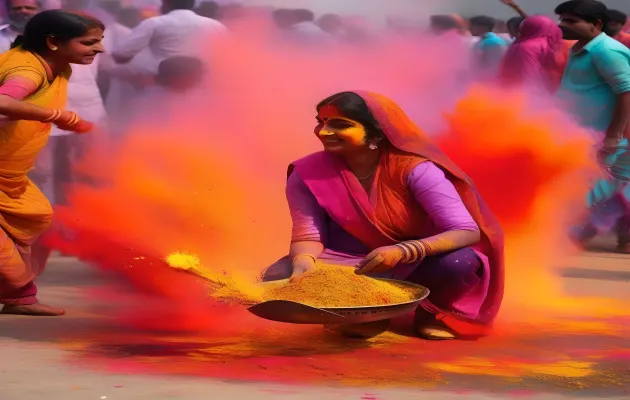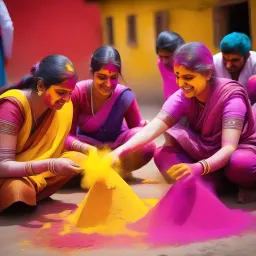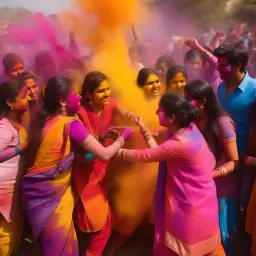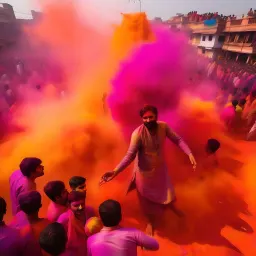Popular Harvest Festivals in India

India, a land of diverse cultures and traditions, cherishes its agrarian roots through vibrant harvest festivals. These celebrations resonate with joy, gratitude, and the spirit of abundance. Let's embark on a colorful journey across India to witness the fervor of its popular harvest festivals.
1.Baisakhi in Punjab
- Significance: Baisakhi marks not only the onset of the harvest season but also holds historical significance. It commemorates the formation of the Khalsa Panth by Guru Gobind Singh in 1699. Farmers express gratitude for a bountiful harvest, while Sikhs celebrate it as a religious festival.
- Celebrations: In Punjab, Baisakhi is celebrated with fervor. The day starts with prayers at gurudwaras followed by Nagar Kirtans (religious processions) showcasing traditional Sikh martial arts and vibrant music. People indulge in traditional dances like the Bhangra and Gidda, and sumptuous Punjabi cuisine.
- Best Time to Visit: Mid-April is the ideal time to witness Baisakhi. Plan for 2-3 days to explore the festivities and cultural performances.
2. Pongal in Tamil Nadu
- Significance: Pongal is a four-day harvest festival dedicated to the Sun God. Each day has its own significance, starting with Bhogi Pongal, followed by Thai Pongal, Maattu Pongal (celebration of cattle), and Kaanum Pongal.
- Celebrations: Homes are adorned with colorful rangolis, and traditional pots are used to cook the Pongal dish. Bull-taming events, cultural performances, and processions with beautifully decorated cattle mark the celebrations.
- Best Time to Visit: Mid-January is the perfect time to experience Pongal in Tamil Nadu. Allocate 4-5 days to participate in various rituals and witness the cultural extravaganza.
3. Onam in Kerala
- Significance: Onam is a ten-day harvest festival that welcomes King Mahabali, a mythical ruler whose spirit is believed to visit Kerala during this time. It's a time for cultural extravaganza, boat races, and elaborate feasts.
- Celebrations: Floral carpets called Pookalam are laid out, traditional dances like Kathakali are performed, and the Snake Boat Race (Vallamkali) is a major attraction. The Onam Sadya, a grand feast with numerous vegetarian dishes served on banana leaves, is a highlight.
- Best Time to Visit: August to September is the Onam season. Plan for about 10 days to witness and indulge in the diverse activities and cultural events across Kerala.
4. Makar Sankranti in Various States
- Significance: Makar Sankranti is celebrated across India with different names and unique customs. It signifies the end of the winter solstice and the beginning of longer days. Kite flying, bonfires, and charity are common rituals.
- Celebrations: Different states have their own rituals. In Gujarat, the International Kite Festival is a major draw, while in Maharashtra, exchanging til-gul (sesame and jaggery) sweets is customary.
- Best Time to Visit: Mid-January is the time for Makar Sankranti celebrations. You can experience the diversity of this festival within 1-2 days in each specific region.
5. Bihu in Assam
- Significance: Bihu is a set of three festivals—Rongali Bihu (Bohag Bihu), Bhogali Bihu (Magh Bihu), and Kongali Bihu (Kati Bihu)—each corresponding to different agricultural cycles.
- Celebrations: Rongali Bihu, celebrated in mid-April, marks the Assamese New Year. People engage in traditional dances like the Bihu dance, participate in community feasts, and exchange bihuwan (traditional gifts).
- Best Time to Visit: Mid-April for Rongali Bihu. To explore the different Bihu festivities in Assam, allocate at least a week.
.Summary
These popular harvest festivals are vibrant expressions of India's cultural diversity, each with its unique customs and traditions. Travelers get the chance to not only witness the agricultural fervor but also immerse themselves in the rich tapestry of India's heritage and traditions.






